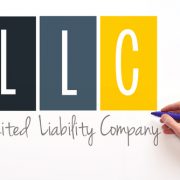Can a Self-Directed IRA Be Diversified Internationally?
When most people hear about the Self-Directed IRA, they are excited about a concept like owning real estate in a retirement portfolio. It means that the investor has access to an entirely different asset class, allowing them to hedge their portfolio or maybe even create an aggressive new strategy for retirement portfolio growth. But as one looks through the available assets, one question sometimes arises: is there any opportunity for Self-Directed IRA investors to diversify themselves internationally?
Sure, an investor can simply buy mutual funds within a Self-Directed IRA and choose mutual funds that include broad international exposure. This is the traditional way that investors will expose themselves to international stocks, for example. But what about the other assets that made Self-Directed IRA investing so appealing in the first place? Real estate, for example? Let us dig deeper and talk about international diversification.
Is It Possible to Invest in a Retirement Fund Outside the U.S.?
Just as a taxable brokerage account can easily buy stocks of foreign companies, an investor could potentially invest in international real estate and hold it within a Self-Directed IRA. This is not to say that there will not be more complications—for example, getting an appraisal on a foreign property could require a lot of work.
It is also possible for an investor to purchase a fund within the U.S. that diversifies itself internationally. There is nothing stopping an investor in a Self-Directed IRA from holding the ordinary assets that many people typically hold within retirement. For example, a target date retirement fund will automatically serve as a single-portfolio purchase that includes diversification into international assets and bonds. However, these are easy enough to invest in without a Self-Directed IRA that it is not always the reason that investors turn to the IRA.
Words of Warning About International Diversification
International diversification, when you are handling it yourself, can be a little tricky. It is important that you do not let the possibility of buying international property make you forget all of the rules that make a Self-Directed IRA function.
- A piece of real estate being held in a foreign country does not exempt it from the usual rules. For example, your IRA-owned property is not one you will want to visit. You are not supposed to personally interact with this property as it is being held for retirement. If you have visions of buying a property with an IRA and visiting it with the white sand between your toes—you might want to rethink that strategy.
- You are not investing in a future retirement home. At least, not directly. Is it possible to purchase a property within your IRA and then take it out of your IRA for personal use later? Well, it is possible—for example, your IRA could sell it to someone, who could potentially later sell it to your personal holdings. But given all of the tax implications and closing costs, it’s usually not the strategy investors are thinking of when they invest in real estate within an IRA. And you certainly cannot transfer your real estate to yourself so easily that you should see your IRA as a way to “blaze the trail” to your personal holdings.
As with any choice an investor makes within a Self-Directed IRA, it is critical to understand the rules that lay the groundwork for how the retirement account will function. An investor has to know what their limits are—as we all as what their freedoms are—to make the proper decisions.
Interested in learning more about Self-Directed IRAs? Contact American IRA, LLC at 866-7500-IRA (472) for a free consultation. Download our free guides or visit us online at www.AmericanIRA.com.








